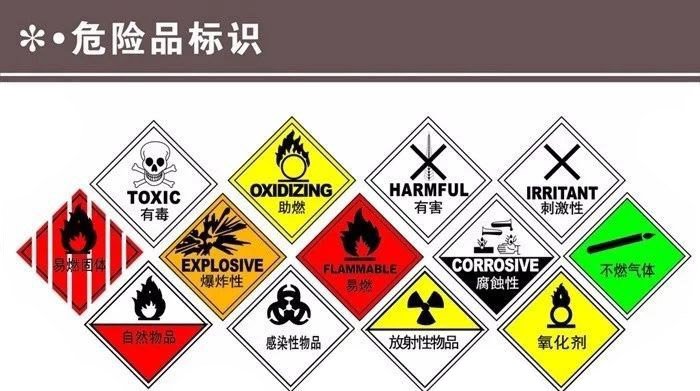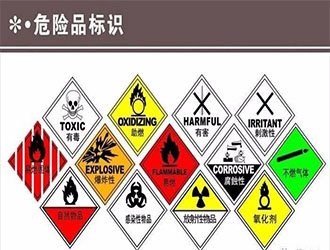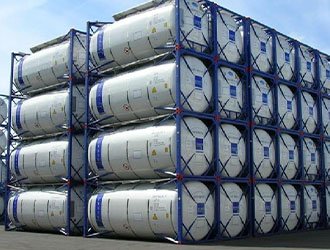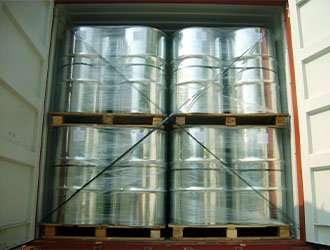Hazardous Chemicals Transportation
According to the United Nations "Recommendations on the Transport of Dangerous Goods (TDG)", dangerous goods are classified according to the direct physical or chemical hazards to people, property or the environment. Dangerous goods are classified into 9 categories, namely:
The first category is explosives, which are the substances and articles of category 1 and item 1 that have the risk of mass explosion, the substances and articles of category 1 and 2 that have the risk of ejection but no mass explosion danger, and the substances and articles of category 1 and 3 that have the risk of combustion and have Local explosion hazard or local ejection hazard or both of these hazards, but no overall explosion hazard substances and articles, category 1 and 4 items that do not present a major hazard, and category 1 and 5 items that have an overall explosion hazard are very different. Sensitive substances, Class 1 6 extremely insensitive substances without overall explosion hazard; Class 1 dangerous goods are very challenging in international shipping. The representative product of Class 1 dangerous goods is fireworks and firecrackers. This dangerous goods can be exported in China. There are very few freight forwarding companies, and most of them are operated by state-owned enterprises. The country has very strict requirements for the transportation of Class 1 dangerous goods, from road transportation to port qualifications, and barge company requirements. According to Westpac International Logistics (WPZ) has many years of experience in international shipping of dangerous goods. At present, only a very small number of ports such as Shanghai Port can export Class 1 dangerous goods. No other ports have the authority to export Class 1 dangerous goods.
Class 2 is gas, which are Class 2 Class 1 flammable gas, Class 2 Class 2 non-flammable non-toxic gas, Class 2 Class 3 toxic gas;
International shipping of Class 2 dangerous goods is also more demanding in the market. Class 2.1 flammable gas, the representative product is automobile spray paint, etc., these products basically require iron cans packaging, and the export declaration requires a dangerous package certificate, etc. The port that can produce this type of product is Shanghai Port.
Class 2.2 dangerous goods are non-flammable and non-toxic gases. Such representative products are concierge flowers. Many exporters in the market declare them as non-dangerous goods. They are transported as general cargo and exported to the United States or Europe, etc. In the country, the consignee requires the shipper to declare as dangerous goods at the time of export during customs clearance. Otherwise, it will be difficult to clear customs. It is recommended that you operate this type of product according to the 2.2 category of dangerous goods. Such dangerous goods can go to Shenzhen, Shanghai and other major ports.
Class 2.3 dangerous goods are toxic gases. These products are more difficult to transport. The representative products are compressed gas, hydrogen sulfide, and various industrial gases. It is Shanghai Port that can handle such dangerous goods exports.
Class 3 is flammable liquid;
The third category of dangerous goods is currently exported with a relatively large volume. The representative products are paints, coatings, glues, adhesives, alcohol and so on. This type of liquid is flammable and has relatively high requirements for flash point. Pay attention to the temperature control of cargo transportation and storage. Ports that can export such products are very common, such as Guangzhou, Shenzhen, Shanghai, Qingdao and other ports.
Class 4 is flammable solids, substances liable to spontaneous combustion, and substances that emit flammable gas in contact with water. They are classified as Class 4, 1 item of flammable solids, Class 4, 2 items of substances liable to spontaneous combustion, and Class 4, items 3 of water that emit flammable gas. Gas substances; among the 4 dangerous goods, the most important thing to pay attention to is the flammable substances of 4.2 and 4.3. Many ports can not accept the export of such products, and there are also many dangerous goods warehouses that cannot store such dangerous goods. There have been many dangerous goods accidents caused by Category 4 dangerous goods.

Category 5 is oxidizing substances and organic peroxides, which are category 5, category 1 oxidizing substance, and category 5, category 2 organic peroxides;
The representative product of category 5.1 dangerous goods is bleaching powder. Many exporters of this type of goods used to operate as general cargoes. When they encounter water or the temperature is too high, they will burn or explode. It and 5.2 dangerous goods have very high temperature requirements. In the operation of international shipping of dangerous goods, there are very few shipping companies that can undertake such products, and they are quite special.
Category 6 is toxic substances and infectious substances, which are category 6 category 1 toxic substance and category 6 category 2 infectious substances;
Category 6 toxic or infectious substances are represented by pesticides, sodium fluorosilicate, etc. Such goods should be carefully shipped to prevent damage and distribution of the goods, which are toxic to the human body. Which port can accept Class 6 dangerous goods must be confirmed separately.
Class 7 is radioactive materials;
When Class 7 radioactive substances are exported, there is basically no forwarder in the market. They are products with serious hazards. Only qualified dangerous goods forwarders or transportation companies can operate them. Export ports and shipping companies also need to confirm multiple times.
Category 8 is corrosive substances;
There are 8 types of corrosive substances, which are divided into two types: acids and alkalis. This category of cargo refers to solids or liquids that can burn human tissues and cause damage to metal and other objects. Visible necrosis occurs within 4 hours of skin contact, or solid or liquid with a surface corrosion rate of more than 6.25mm/a for No. 20 steel when the temperature is 55°C. There are strict special requirements for the external packaging of Category 8 dangerous goods in international shipping. The ports that can export Category 8 are Shenzhen, Guangzhou, Shanghai, Qingdao, Tianjin and so on.
Category 9 is miscellaneous hazardous substances and articles.
Among the 9 categories, most of the miscellaneous dangerous goods exported are batteries, various lithium batteries, and accumulators. They were all sold as general goods before. Later, there were more safety accidents, and they were classified into 9 categories. Some of these lithium batteries will be made into electric vehicles, all of which need to be declared as 9 categories of dangerous goods. Many ports across the country can export 9 categories of dangerous goods.
Westpac International Logistics (WPZ), in order to obtain the relevant qualifications for related hazardous chemicals, and has accumulated rich experience in daily operations, and at the same time always pay attention to customs policies, and make decisions for the factory to ship various special products. Appropriate professional advice.
• Standard service • Value-added services • Return service • Extended service


